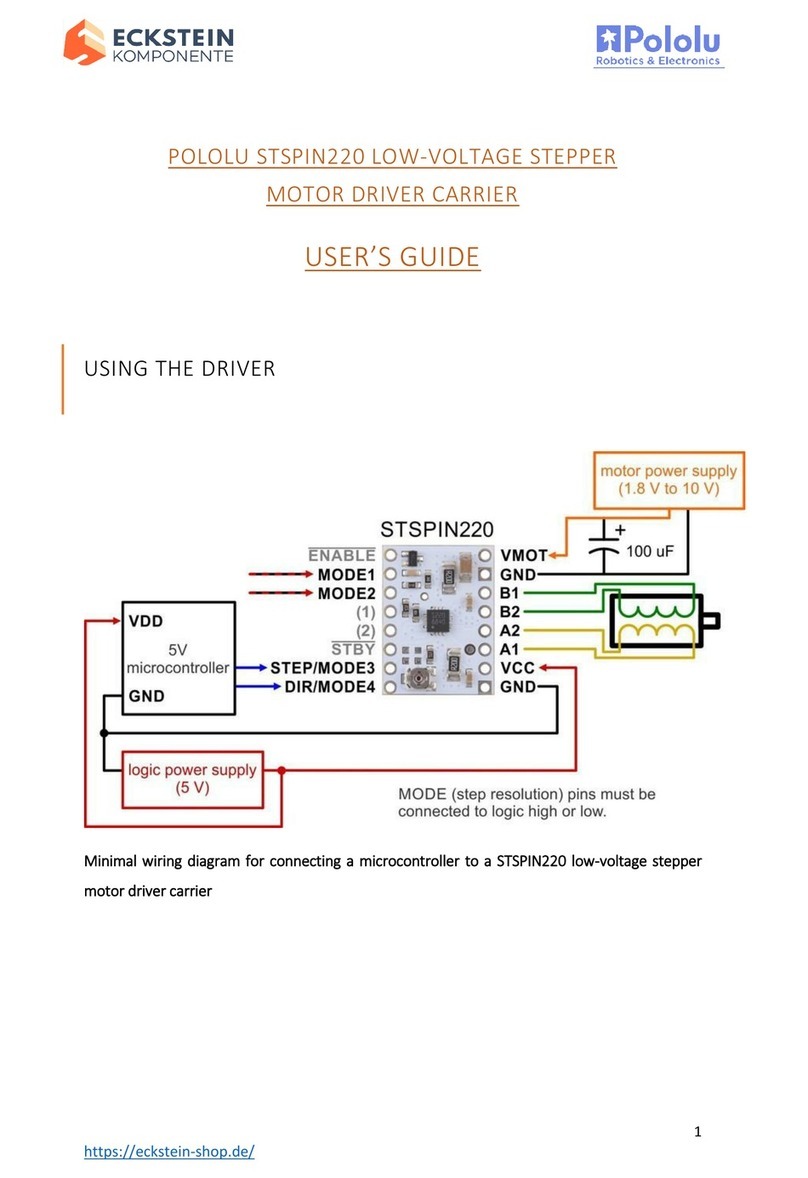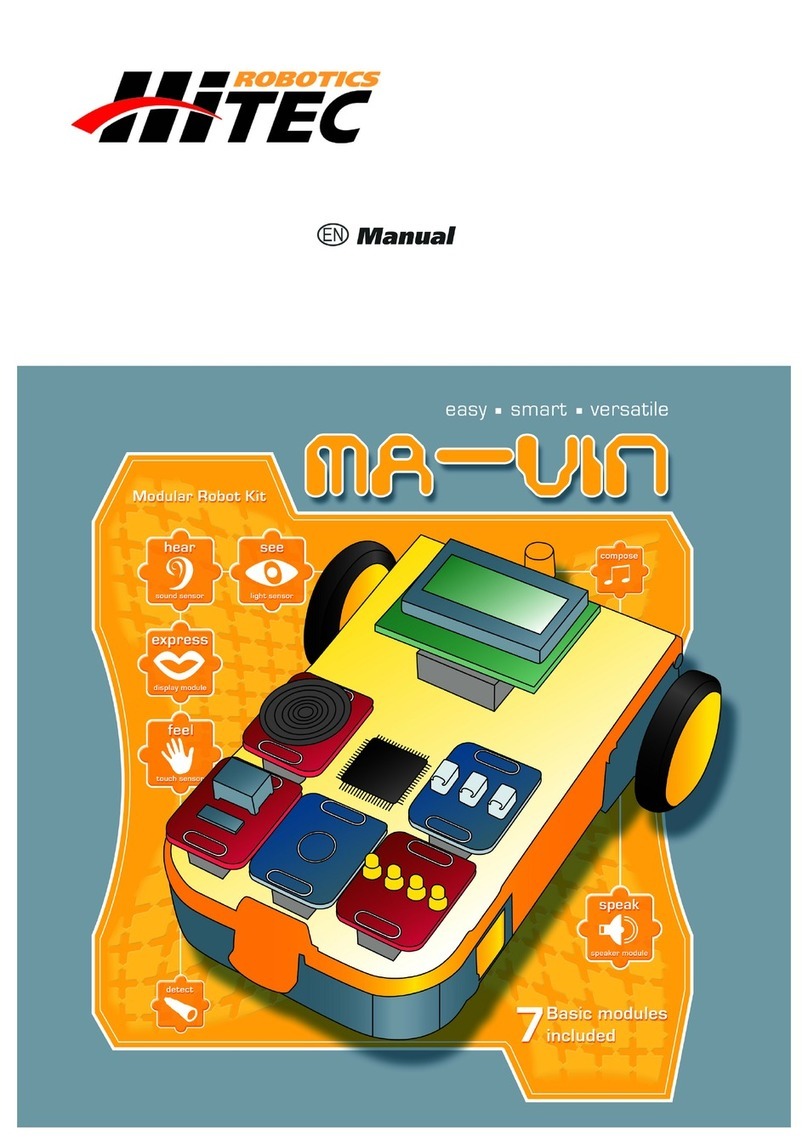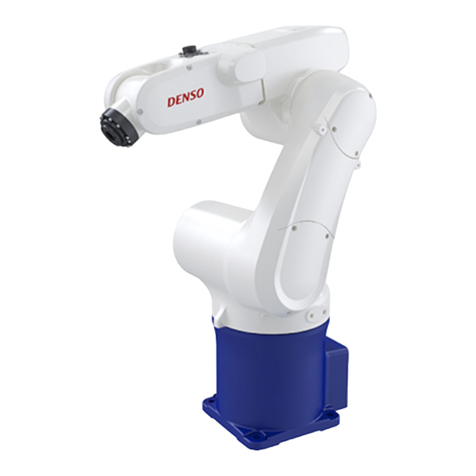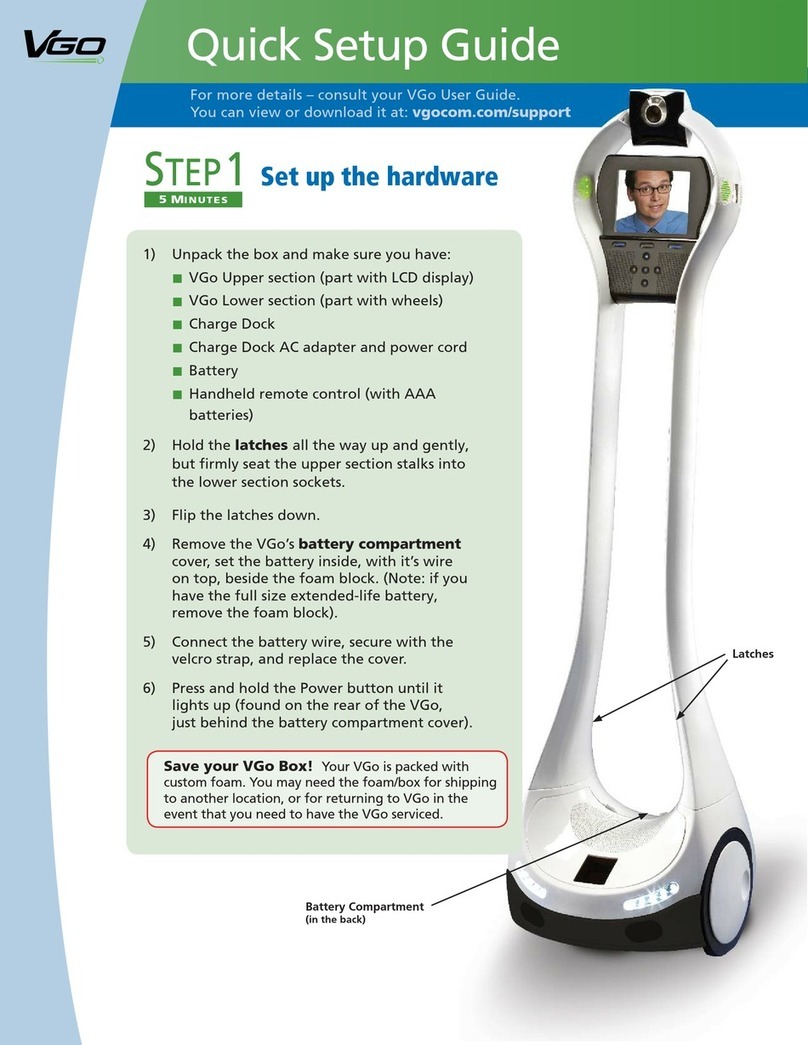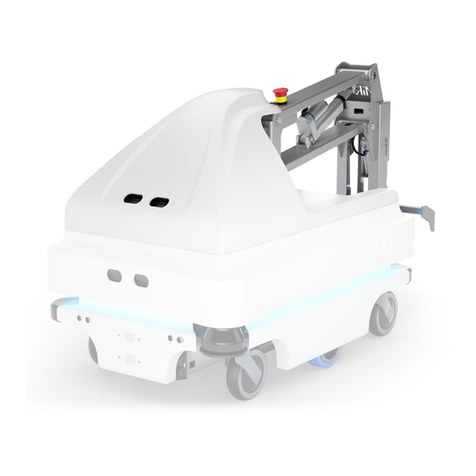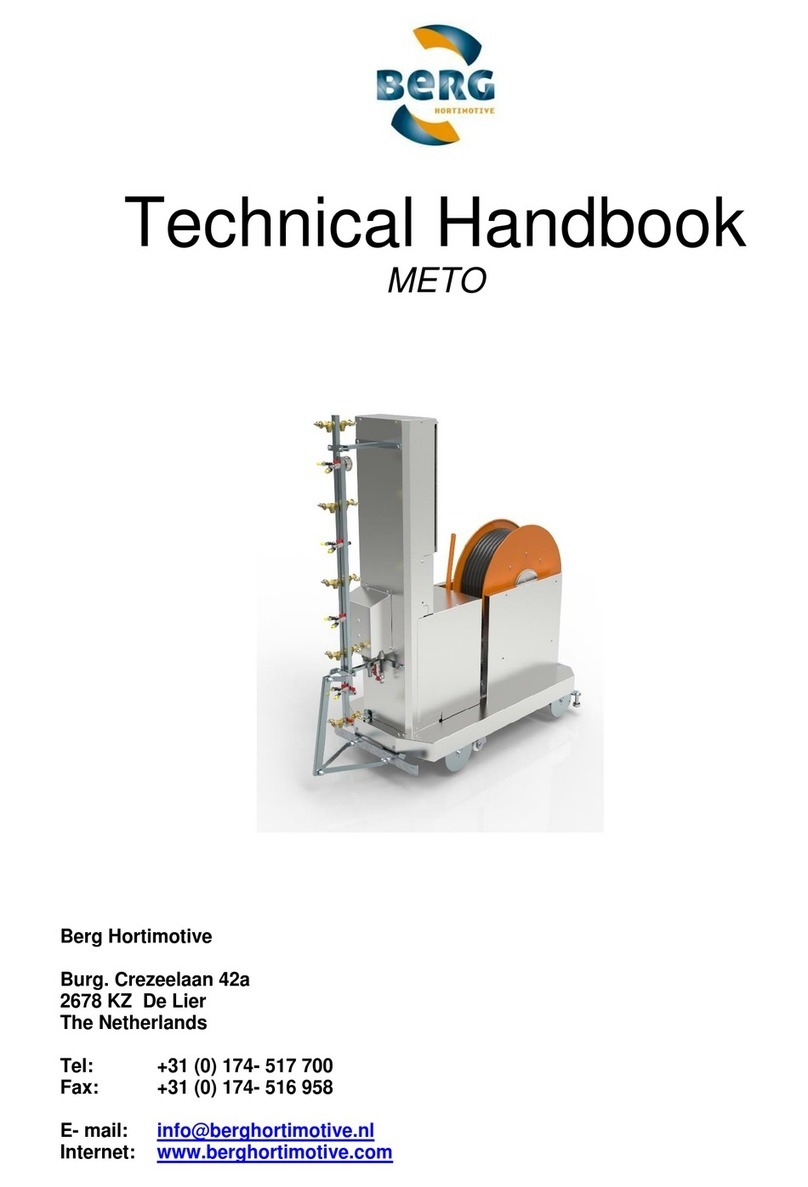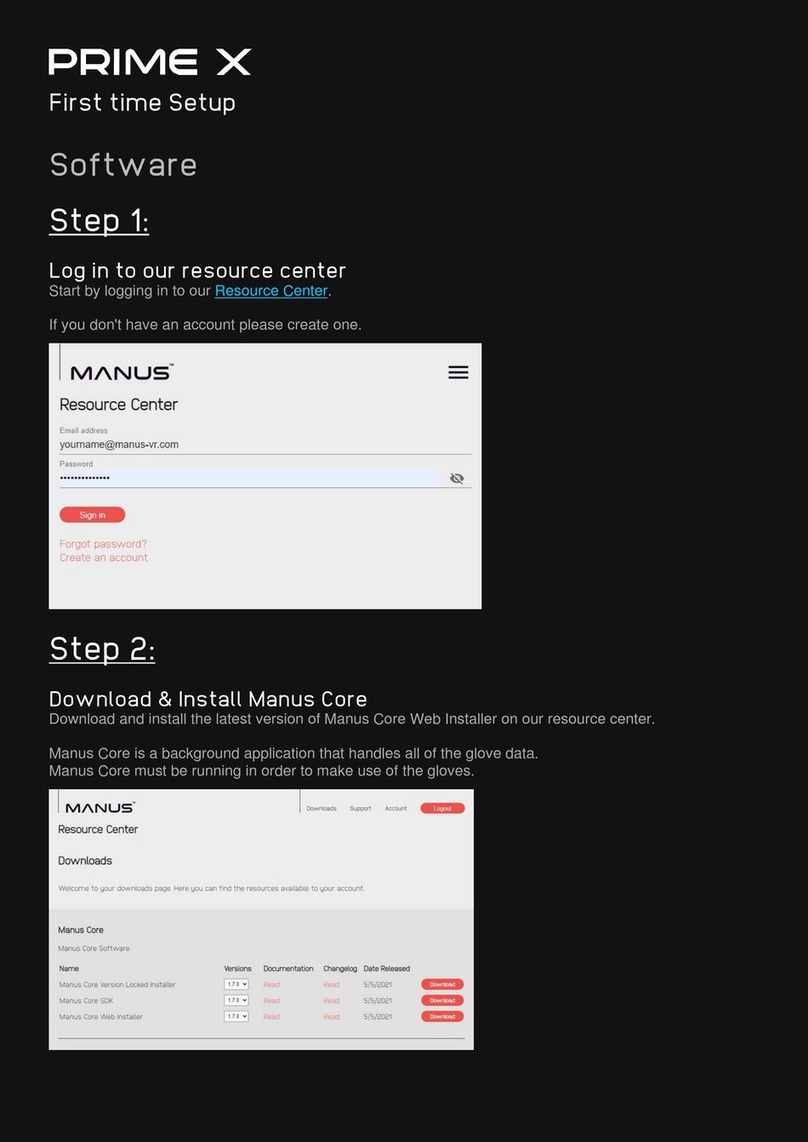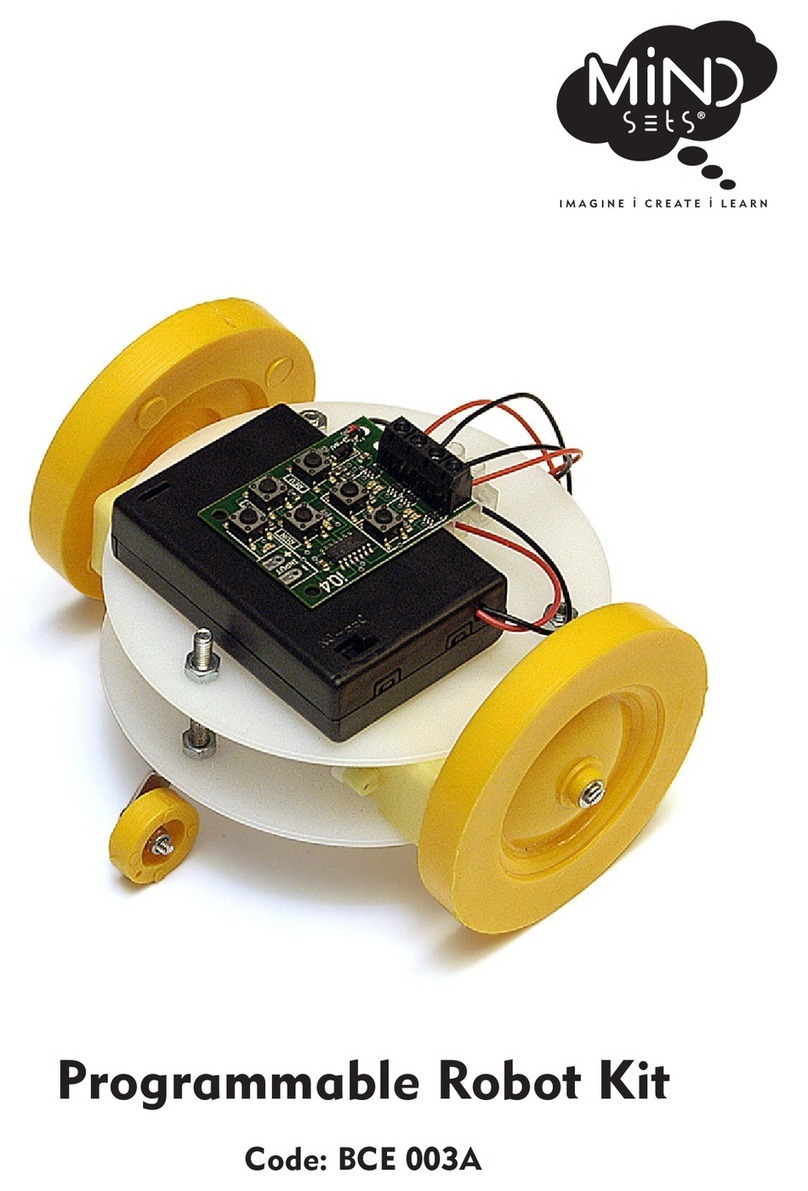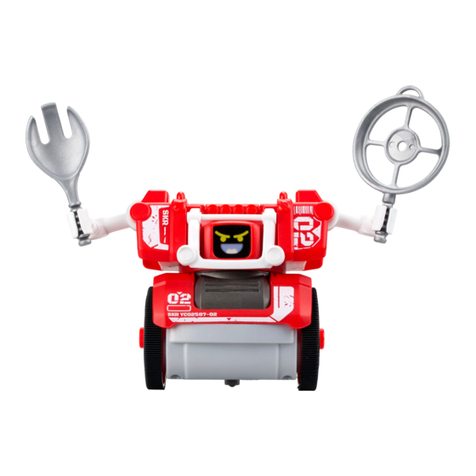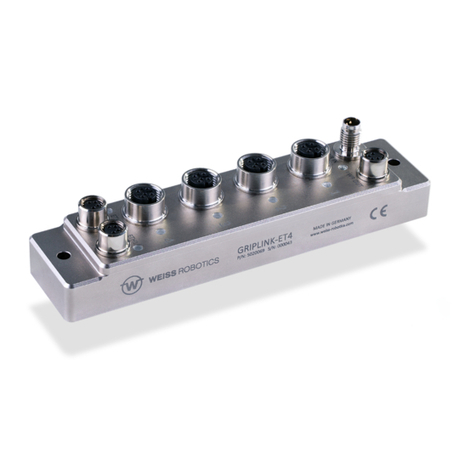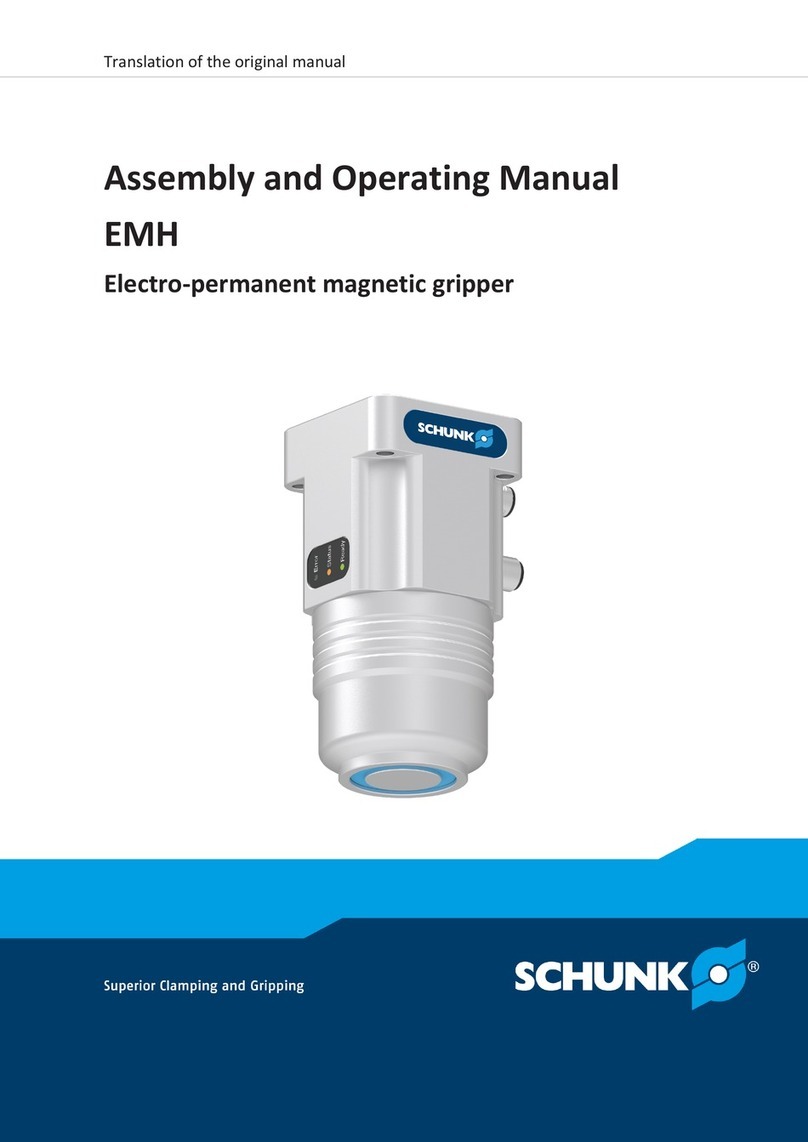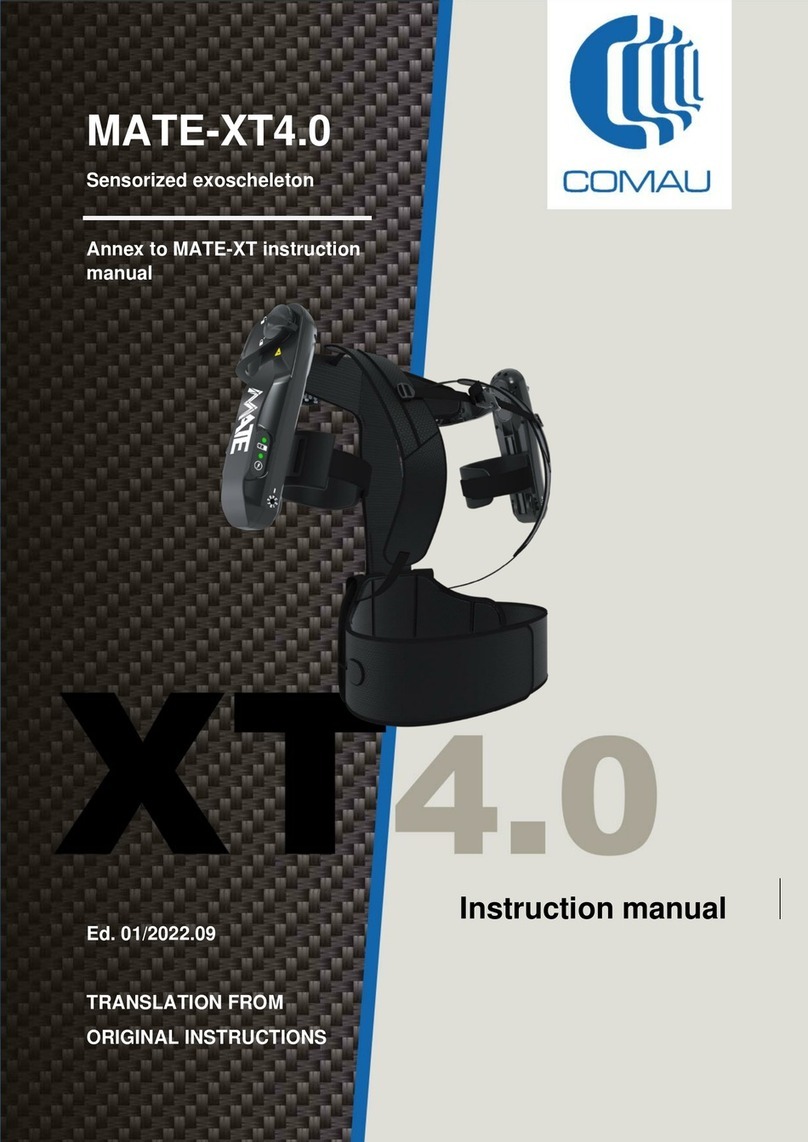Eckstein komponente Keyestudio 4WD Mecanum Robot Car User manual

1
Keyestudio 4WD Mecanum Robot Car
(Makecode)
Contents
1. Introduction ..................................................................................................................4
2. Description ....................................................................................................................6
3.Parameters......................................................................................................................6
4.Kit List...............................................................................................................................7
5.Preparations: ............................................................................................................... 12

2
5.1Background Information about Micro:bit............................................... 12
( 1 )What is Micro:bit?................................................................................. 12
( 2 )Layout....................................................................................................... 13
( 3 ) Pinout ...................................................................................................... 14
( 4 )Notes for the application of Micro:bit main board................... 16
5.2.Install Micro:bit driver .................................................................................. 17
6.Keyestudio 4WD Mecanum Robot Car............................................................... 18
6.1.Basic Information about Keyestudio 4WD Mecanum Robot Car .. 18
6.2. the Installation of keyestudio 4WD Mecanum Robot Car .............. 20
7.Get Started with Micro:bit ...................................................................................... 42
7.1 Write code and program:........................................................................ 42
7.2.Makecode:..................................................................................................... 53
7.3 Quick Download............................................................................................. 54
7.4.Makecode extension library:...................................................................... 62
7.4.Resources and test code.............................................................................. 71
7.5.Input test code................................................................................................ 72
7.6.Install CoolTerm:.......................................................................................... 77
8.Projects ......................................................................................................................... 79
Project 1: Heartbeat............................................................................................. 80
Project 2: Light A Single LED............................................................................. 83
Project 3: LED Dot Matrix................................................................................... 90
Project 4: Programmable Buttons.................................................................102

3
Project 5: Temperature Measurement .........................................................113
Project 6: Geomagnetic Sensor......................................................................127
Project 7: Accelerometer..................................................................................142
Project 8: Light Detection ................................................................................157
Project 9: Speaker...............................................................................................163
Project 10: Touch-sensitive Logo...................................................................169
Project 11: Microphone ....................................................................................175
Project 12: Bluetooth Wireless Communication.......................................187
Project 13:Colorful Lights .............................................................................208
Project 14:WS2812 RGB LEDs......................................................................215
Project 15:Servo...............................................................................................238
Project 16:Motor..............................................................................................247
Project 17:Line Tracking Sensor..................................................................260
17.1: Detect Line Tracking Sensor.........................................................260
17.2: Line Tracking Smart Car.................................................................278
Project 18: Ultrasonic Follow Smart Car......................................................288
18.1: Ultrasonic Ranging..........................................................................288
18.2: Ultrasonic Avoidance Car ..............................................................297
18.3: Ultrasonic Follow Smart Car.........................................................313
Project 19:IR Remote Control......................................................................322
19.1:Decode IR Remote Control.........................................................322
19.2:IR Remote Control .........................................................................332

4
Project 20: Bluetooth Multi-purpose Smart Car.......................................348
20.1: Read Bluetooth Data.......................................................................348
20.2: Multi-purpose Smart Car ..............................................................363
9. Resources:.................................................................................................................369
1. Introduction
Have you wondered to learn programming or have your own
programming robot? Nowadays, programming has developed to a lower
age group, and it will be a trend for everyone to be able to program thanks
to the spread of simple graphical programming platforms, from micro:bit
to Arduino and Raspberry Pi. Maybe you haven't heard of them before. It
doesn't matter because with the help of this product and tutorial, you can
easily install a multi-functional programming car and experience the fun of
being a maker.
Micro:bit is a highly integrated microcontroller of powerful functions and
small size. It is very suitable to be applied in STEAM education for it
functions to make robots, wearable devices and electronic interactive
games via the combination of code programming and graphical
programming.

5
This Keyestudio 4WD Mecanum Robot Car is a smart DIY car specially
designed for micro:bit. The smart car kit consists of a car body with
extended functions, a PCB base plate with integrated motor drive sensors,
4 decelerating DC motors, Mecanum wheels, various modules and sensors
and acrylic boards. Therefore, you can easily assemble a cool Mecanum
wheel 4WD smart car by yourself, and then use Microsoft's online graphical
programming platform Make Code to program the micro:bit control board
to control the car. In the process, you can not only experience the fun of
creation but enhance hands-on ability and learn programming skills as
well.
MakeCode for micro:bit is the most widely used graphical programming
environment on the micro:bit official website. It is based on the graphical
programming environment developed by Microsoft's open source project
MakeCode. This graphical programming can also be converted to code
languages, python and javascript language. This combination makes learn
programming easy. At the same time, MakeCode programming can be
simulated or programmed for actual electronic components.
For your convenience, source code has been provided in every project, as
well as code programming steps and code explanation in details. Hope you
can better understand them.

6
2. Description
This product is a smart car based on Micro:bit. It boasts multiply functions
including ultrasonic sound following, line tracking, infrared control and
Bluetooth control. It comes with a passive buzzer which is able to play
music, 4 WS2812RGB LEDs to display different colors, 2 colorful lights to
make direction lights for the car. This product uses two 18650 lithium
batteries for power supply.
When installing and disassembling the battery, please pay attention to the
positive and negative poles of the battery, and be sure not to reverse the
them. By the way, the motor speed of this product is adjustable.
In order to provide you with better experience, corresponding documents
about installation and test code are also provided.
3.Parameters
◆Connector port input: DC 6V---9V
◆Operating voltage of drive board system: 5V
◆Standard operating power consumption: about 2.2W
◆Maximum power: Maximum output power is 12W
◆Motor speed: 200RPM/1min
◆Working temperature range: 0-50℃
◆Size: 120*120*120mm
◆Environmental protection attributes: ROHS

7
Note: working voltage of micro:bit is 3.3V, driver shield integrates 3.3V/5V
communication conversion circuit.
4.Kit List
#
Picture
Components
Quanti
ty
1
KS0511 Acrylic Board T=3mm
1
2
Acrylic Board with Lego Holes
T=3mm
1
3
4.5V Motor
4
4
23*15*5MM Fixing Board
4

8
5
Servo
1
6
Mecanum Wheels
4
7
Keyestudio Micro:bit IO Port
Expansion Sensor Shield With
Level Conversion
1
8
Micro:bit Main Board V2.0 with
Package for KS4031
1
Micro:bit Main Board V2.0 for
KS4032
0

9
9
Keyestudio Driver Board
1
10
M3*20MM Dual-pass Copper
Pillar
4
11
4265c Lego Part
4
12
43093 Lego Part
4
13
Acrylic Gasket Six in One Pack
1

10
14
M3*6MM Round Head Screw
18
15
Keyestudio Ultrasonic Module
1
16
M3 Nickle-plated Nut
14
17
M3*30MM Round Head Screw
9
18
M2 Nickle-plated Nut
3
19
M2*8MM Round Head Screw
3

11
20
M3*8MM Round Head Screw
5
21
Remote Control (without
batteries)
1
22
Plastic String 3*100mm
5
23
USB Cable
1
24
HX-2.54 2P DuPont Wire
100mm
1
25
HX-2.54 4P DuPont Wire
50mm
2
26
XH2.54 4P DuPont Wire
160mm
1
27
XH2.54 3P DuPont Wire 50mm
2

12
28
3*40mm Screwdriver
1
29
M1.2*5mm Round Head
Self-tapping Screw
6
5.Preparations:
5.1Background Information about Micro:bit
( 1 )What is Micro:bit?
Micro:bit is an open source hardware platform based on the ARM
architecture launched by British Broadcasting Corporation (BBC) together
with ARM, Barclays, element14, Microsoft and other institutions. The core
device is a 32-bit Arm Cortex-M4 with FPU micro-processing.
Though it is just the size of a credit card, the Micro:bit main board is
equipped with loads of components,including a 5*5 LED dot matrix, 2
programmable buttons, an accelerometer, a compass, a thermometer, a
touch-sensitive logo and a MEMS microphone, a Bluetooth module of low
energy, and a buzzer and others. Thus, it also boasts multiple functions.
The buzzer built in the other side of the board makes playing all kinds of
sound possible without any external equipment. The golden fingers and

13
gears added provide a better fixing of crocodile clips. Moreover, this board
has a sleeping mode to lower power consumption of batteries and it can
be entered if users long press the Reset & Power button on the back of it. It
is capable of reading the data of sensors, controlling servos and RGB lights
and attaching with a shield so as to connect with various sensors. It also
supports a variety of codes and graphical programming platforms, and is
compatible with almost all PCs and mobile devices. It has no need to install
drivers. It is of high integration of electronic modules, and has a serial port
monitoring function for easy debugging.
The board has found wide applications. It can be applied in programming
video games, making interactions between light and sound, controlling a
robot, conducting scientific experiments, developing wearable devices and
make some cool inventions like robots and musical instruments, basically
everything imaginable.
( 2 )Layout

15
The functions of pins:
GPIO
P0,P1,P2,P3,P4,P5,P6,P7,P8,P9,P10,P11,P12,
P13,P14,P15,P16,P19,P20
ADC/DAC
P0,P1,P2,P3,P4,P10
IIC
P19(SCL),P20(SDA)
SPI
P13(SCK),P14(MISO),P15(MOSI)
PWM(used
frequently)
P0,P1,P2,P3,P4,P10
PWM(not
frequently
used)
P5、P6、P7、P8、P9、P11、P12、P13、P14、P15、P16、P19、
P20

16
Occupied
P3(LED Col3),P4(LED Col1),P5(Button A),P6(LED Col4),
P7(LED Col2),P10(LED Col5),P11(Button B)
Browse the official website for more details:
https://tech.microbit.org/hardware/edgeconnector/
https://microbit.org/guide/hardware/pins/
( 4 )Notes for the application of Micro:bit main board
a. It is recommended to cover it with a silicone protector to prevent short
circuit for it has a lot of sophisticated electronic components.
b. Its IO port is very weak in driving since it can merely handle current less
than 300mA. Therefore, do not connect it with devices operating in large
current, such as servo MG995 and DC motor or it will get burnt.
Furthermore, you must figure out the current requirements of the devices
before you use them and it is generally recommended to use the board
together with a Micro:bit shield.
c. It is recommended to power the main board via the USB interface or via
the battery of 3V. The IO port of this board is 3V, so it does not support
sensors of 5V. If you need to connect sensors of 5 V, a Micro: Bit expansion
board is required.

17
d. When using pins(P3, P4, P6, P7 and P10)shared with the LED dot matrix,
blocking them from the matrix or the LEDs may display randomly and the
data about sensors connected maybe wrong.
e. Pin 19 and 20 can not be used as IO ports though the Makecode shows
they can. They can only be used as I2C communication.
f. The battery port of 3V cannot be connected with battery more than 3.3V
or the main board will be damaged.
g. Forbid to operate it on metal products to avoid short circuit.
To put it simple, Micro:bit V2 main board is like a microcomputer which has
made programming at our fingertips and enhanced digital innovation. And
as for programming environment, BBC provides a website:
https://microbit.org/code/, which has a graphical MakeCode program easy
for use.
5.2.Install Micro:bit driver
Micro:bit is free of driver installation. However, in case your computer fail
to recognize the main board, you can install the diver too.

18
Just enter the link https://fs.keyestudio.com/KS4031-4032
to download the driver file of micro:bit in
file folder
6.Keyestudio 4WD Mecanum Robot Car
This chapter will introduce the function and structure of keyestudio 4WD
Mecanum Robot Car. It is a programmable car based on BBC micro:bit.
Driven by motors, it boasts a line tracking sensor and an infrared receiver
integrated into the bottom plate, an ultrasonic sensor, servos ,2 colorful
lights, 4 WS2812 RGB lights. The wiring is not complicated and it has
Lego jacks to facilitate connection with other peripheral devices. Abundant
hardware resources will enable you to master more knowledge and skills,
so that you can use your imagination to create more technological
inventions.
6.1.Basic Information about Keyestudio 4WD Mecanum Robot Car
This car can help you to better learn to use Micro:bit and obtain electronic
knowledge.
Components: an ultrasonic sensor, servos ,2 colorful lights, 4 WS2812 RGB

19
lights 4 decelerating DC motors, Mecanum wheels,
Sensor
Colorful
light
Decelerat
ing DC
motor
Servo
Ultrasonic
sensor
Line
Tracking
Sensor
Infrared
Receiver
WS2812
RGB
light
Power
switch
#
2
4
1
1
1
1
4
1
Note: the line tracking sensor, WS2812 RGB lights and infrared receiver
servo are integrated in the base.
Pins:
Pin on Micro:bit
Sensors of the keyestudio
4WD Mecanum Robot Car
P1 P2
Line Tracking Sensor
P14
Servo
P8
4个WS2812RGB Lights
P9
Infrared Receiver
P15P16
Ultrasonic Sensor
Power supply and Battery
The keyestudio 4WD Mecanum Robot Car is powered by two 18650
batteries. The battery holder of the car is compatible with any type of
18650 lithium battery (rechargeable). You can use a universal battery

20
charger to charge the 18650 lithium battery.
Please note: This product does not contain batteries.
6.2. the Installation of keyestudio 4WD Mecanum Robot Car
Part 1
Components
Needed
Table of contents
Other Eckstein komponente Robotics manuals
Popular Robotics manuals by other brands

Vex Robotics
Vex Robotics IQ Snapshot Build instructions
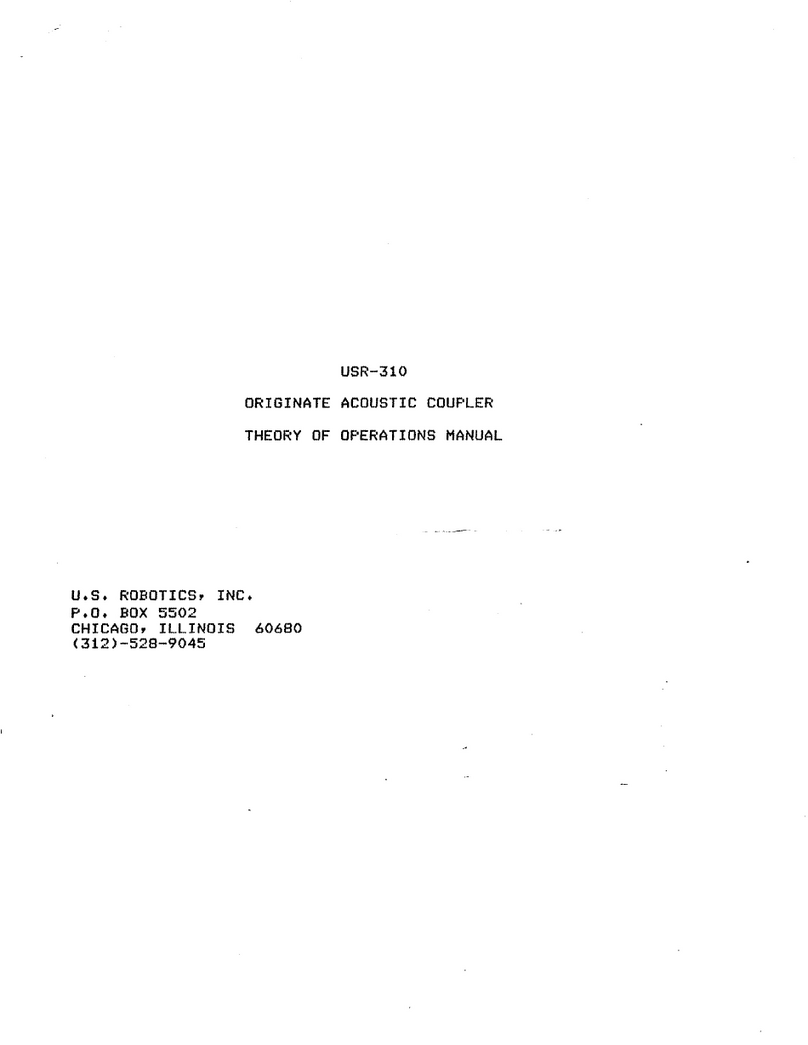
US Robotics
US Robotics USR-310 Operation manual
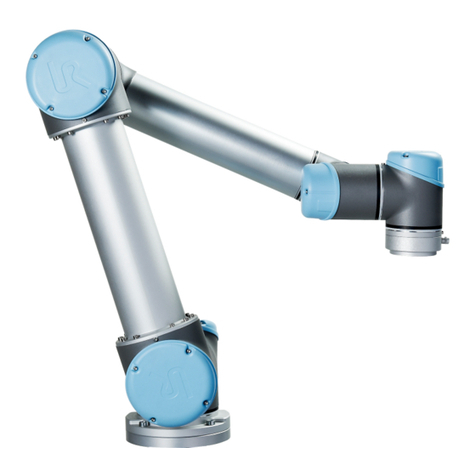
Universal Robots
Universal Robots UR5 user manual
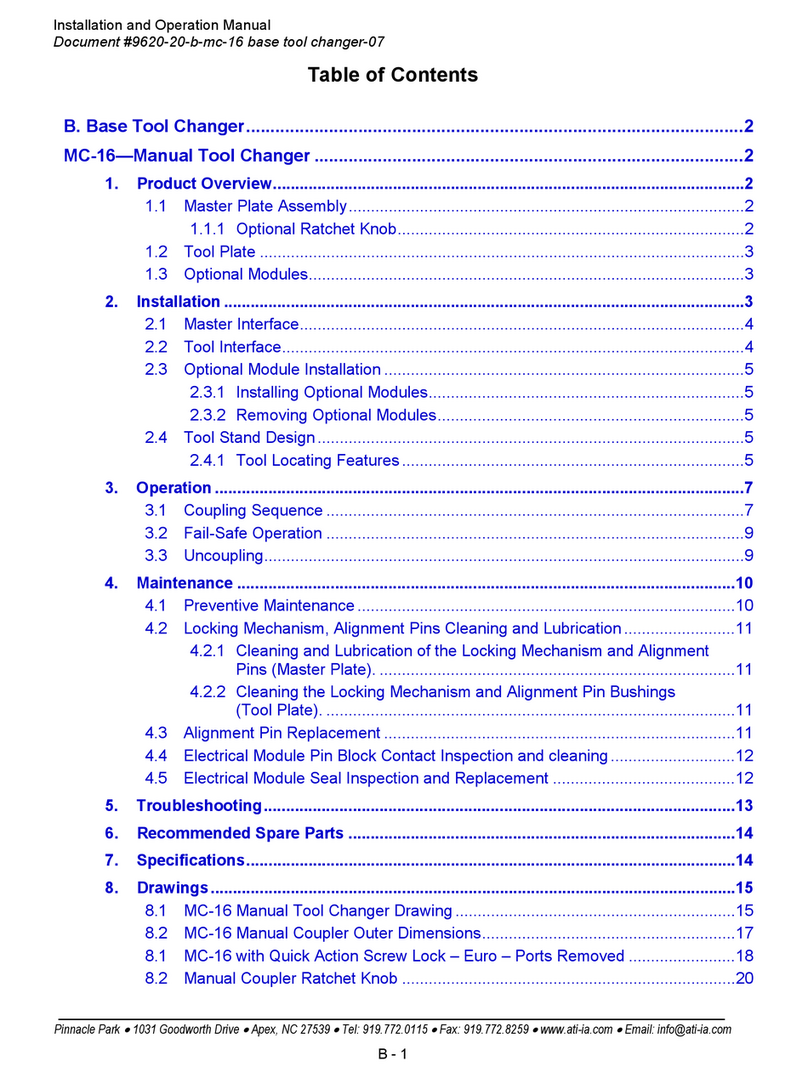
ATI Technologies
ATI Technologies MC-16 Installation and operation manual
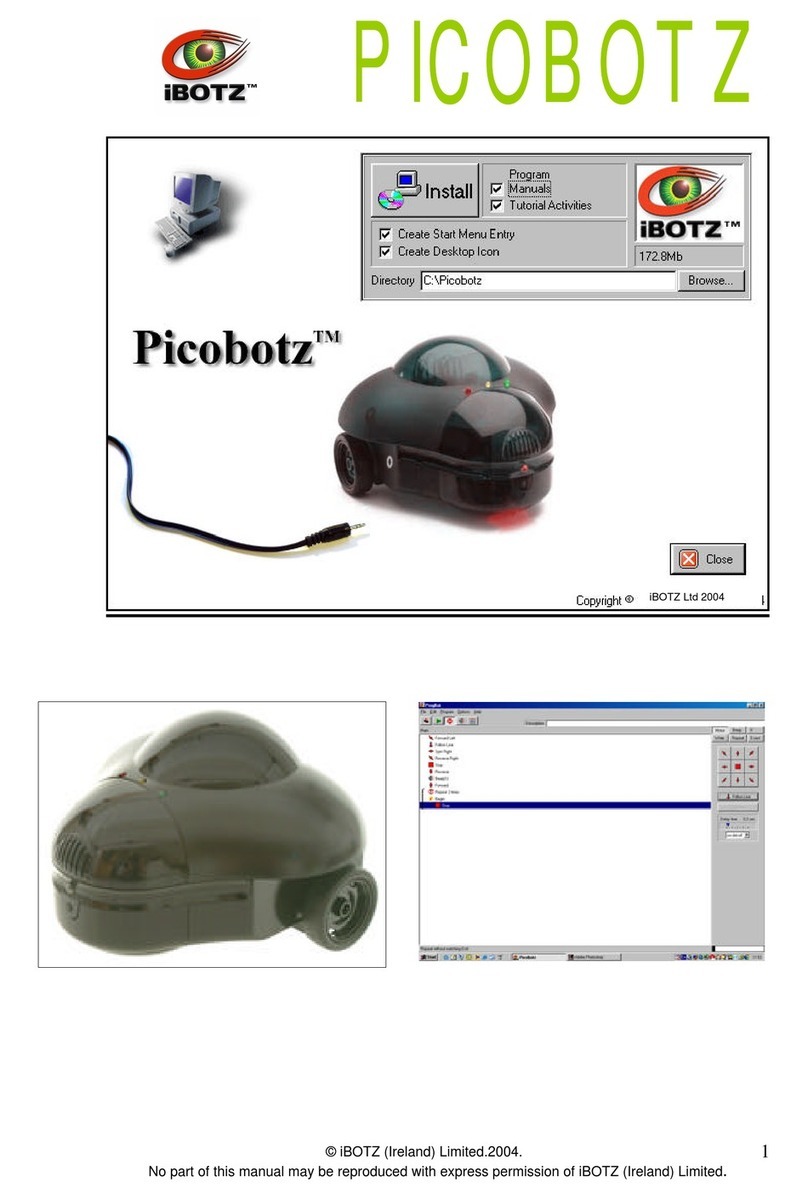
iBOTZ
iBOTZ PICOBOTZ manual
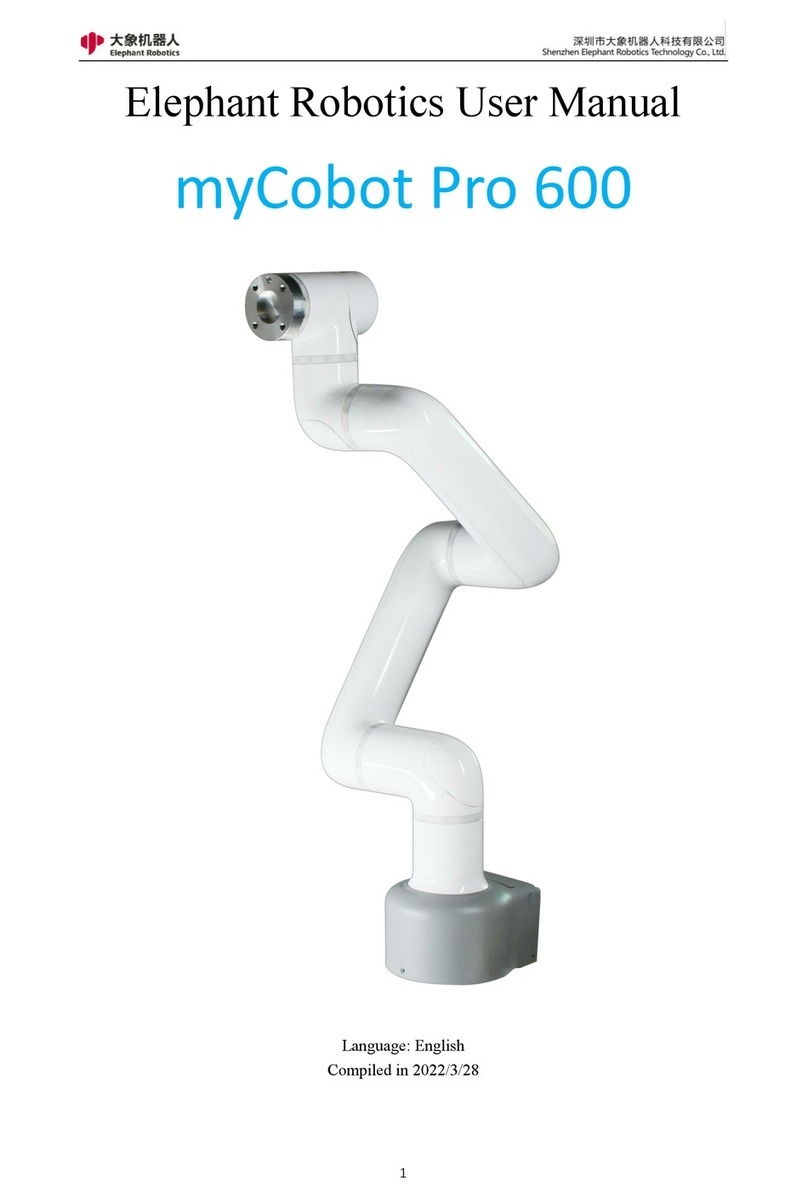
Elephant Robotics
Elephant Robotics myCobot Pro 600 user manual

